Type-C, the full name of USB Type-C interface, is a brand-new form of USB interface, which was born with the latest USB3.1 standard. After all, it is a USB interface. In fact, the value of Type-C for the new MacBook is not even as great as that of a simple USB interface, because it solves the most troublesome global problem since the appearance of the USB interface, that is:" It can be plugged in without distinguishing direction, both positive and negative ."
Okay, although you know what the Type-C interface can probably achieve and what it is, many people may still have a question like "Why is it called Type-C? Where did A and B go?
Since there is Type-C, there must be Type-A and Type-B. What exactly Type-A and Type-B look like, please see the picture below
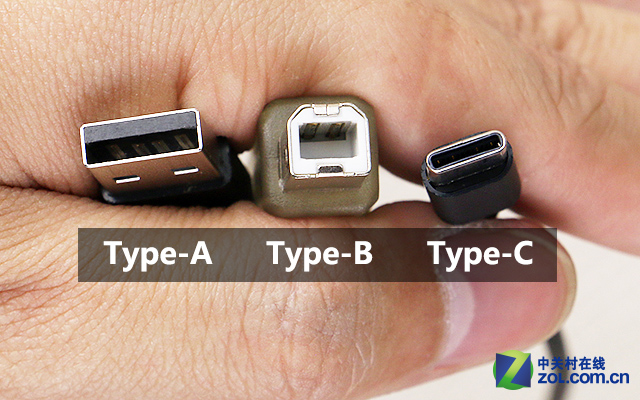
USB interface: standard Type-A interface, Type-B interface and Type-C interface from left to right
After reading the picture, everyone should suddenly realize: the original Type-A interface is the most commonly used standard USB interface! Yes, the full name of the Type-A interface is "Standard Type-A USB", which means that it is a standard USB interface, and other shapes of USB interfaces are its derivatives.
As for the Type-B USB interface, although its appearance rate is far lower than that of the standard Type-A interface, everyone is not unfamiliar with it, because many external USB devices such as printers, monitors, USB, HUB, etc. use Type-B USB interface. Generally speaking, the USB interfaces on the PC are all standard Type-A, while the external devices mostly use Type-B.
Finally, there is a new Type-C interface. It has a much smaller volume than Type-A and Type-B, and its size is even comparable to Mini-USB and Micro-USB. It is the latest USB interface form factor. In addition, Type-C is an interface type that can be applied to both PC (master device) and external device (slave device), which is epoch-making.
After the release of the Type-C interface, "Is Mini-USB called Type-A, Micro-USB called Type-B, and the new one called Type-C?" In fact, this is not the case, we often use both Mini-USB and Micro-USB were born according to the USB2.0 transmission protocol. The magic is that they are also divided into Type-A and Type-B respectively. In the USB3.0 era, due to the improvement of the transmission speed brought about the improvement of the pin position, only the Type-A USB3.0 interface maintains the same shape as the previous one, and both Type-B and Micro-USB have changed their appearance (increased volume) ).
Mini-USB2.0 Interface
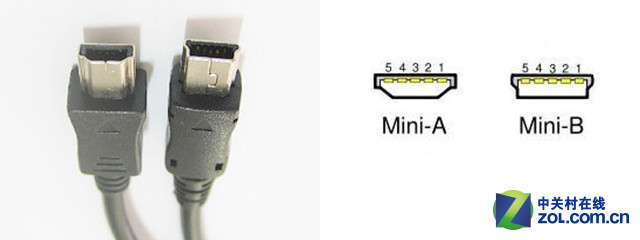
Mini-USB 2.0 Type A and Type B interfaces
The Mini-USB interface is also an interface we are very familiar with. It is widely used in digital products, such as MP3, digital cameras, and mobile hard drives. Compared with the standard USB interface and Type-B USB interface, its size is greatly reduced. Perhaps most of the Mini-USB interfaces that you see are Mini-B type. This is because the Mini-A type is less foolproof, so there is a Mini-B type that replaces it.
Micro-USB2.0 Interface
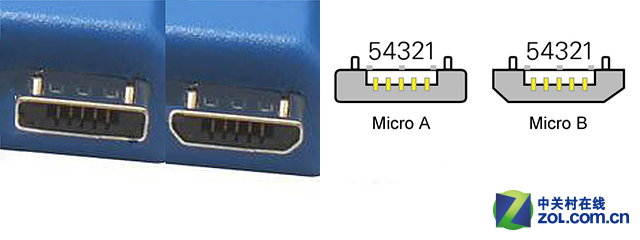
Micro-USB 2.0 Type A and Type B interfaces
Mini-USB interface is divided into A/B, and Micro-USB is no exception. The Micro-USB interface is an improved version of the Mini-USB interface. It reduces the size again and is more suitable for mobile devices that are becoming thinner and lighter. Similarly, the Type-B type of the Micro-USB interface is also an improved version of the Type-A type. From the figure, it is not difficult to see that the shape of the Micro-A interface is rectangular, which greatly increases the error insertion rate!
Micro-USB3.0 Interface
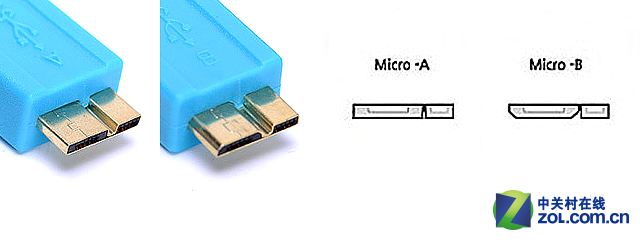
Micro-USB 3.0 type A and B interface
USB Type-B is a bit embarrassing
The standard Type-A USB interface is relatively large, so its appearance has not changed since it has developed to USB3.1. However, the Type-B USB interface is a bit embarrassing, because it is not much smaller than the standard Type-A USB interface in terms of volume, but perhaps the design did not take future development into account at the beginning of the design, resulting in nowhere to place additional pins. Therefore, the Type-B USB3.0 interface had to change its appearance, which increased its height compared to Type-B USB2.0.
USB3.1 interface and Type-C
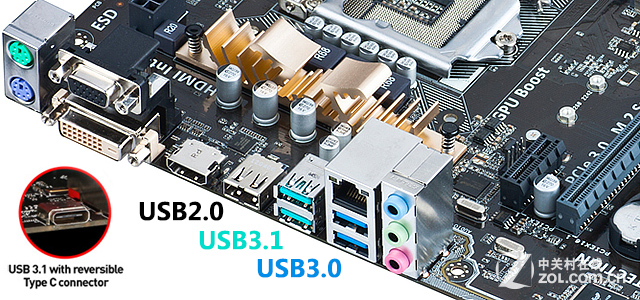
USB3.1 interface and USB3.0 interface are still distinguished by color
In the industry, the USB3.0 interface is made blue to distinguish it from the black of the USB2.0 interface. Although the USB Association did not specify the color of USB3.1, it will be inevitable to distinguish by color.
The Type-C interface and the USB3.1 standard were launched almost at the same time, and the Type-C specification was indeed formulated in accordance with USB3.1. Therefore, USB3.1 can of course be made as Type-C, but Type-C≠USB3.1.
The USB3.1 specification has a transmission rate of 10Gbps, which is twice the speed of USB3.0 5Gbps, reaching the same speed as the Thunderbolt interface. With ultra-high bandwidth, it also supports powerful power transmission functions up to 100W. In addition, the Type-C interface can also be used as a video output interface.
Type-C is a revolutionary emergence, what do you say? In the previous article, when the author released that USB interface family portrait, did everyone feel too messy? That's right, the shapes of the master device interface, the slave device interface and the mobile device interface are all different, and each type of interface is divided into A/B, etc... We can't help but sigh: Why can't it be unified? The emergence of Type-C solves this problem. It is different from Type-A which is only used in the main device, Type-B which is used only in the slave device and Mini&Micro-USB which is only used in mobile devices. In the master device, it can be in the slave device, and can also be the interface used in the mobile device.

Not only does the USB interface have many specifications (confusion), other interfaces also have this problem (the picture shows the four types of HDMI interfaces)
Coupled with the high-speed USB3.1 speed specification, with a compact appearance, it solves the "global problem" that has plagued users for many years (finally can be plugged in front and back), blurs the interface difference between the master device and the slave device, and breaks the mobile device Exclusive interface specification, integrated video transmission function, inherited all the excellent pedigree of USB interface, and slowly type c will become the dominant one in the future.






















View More(Total0)Comment Lists